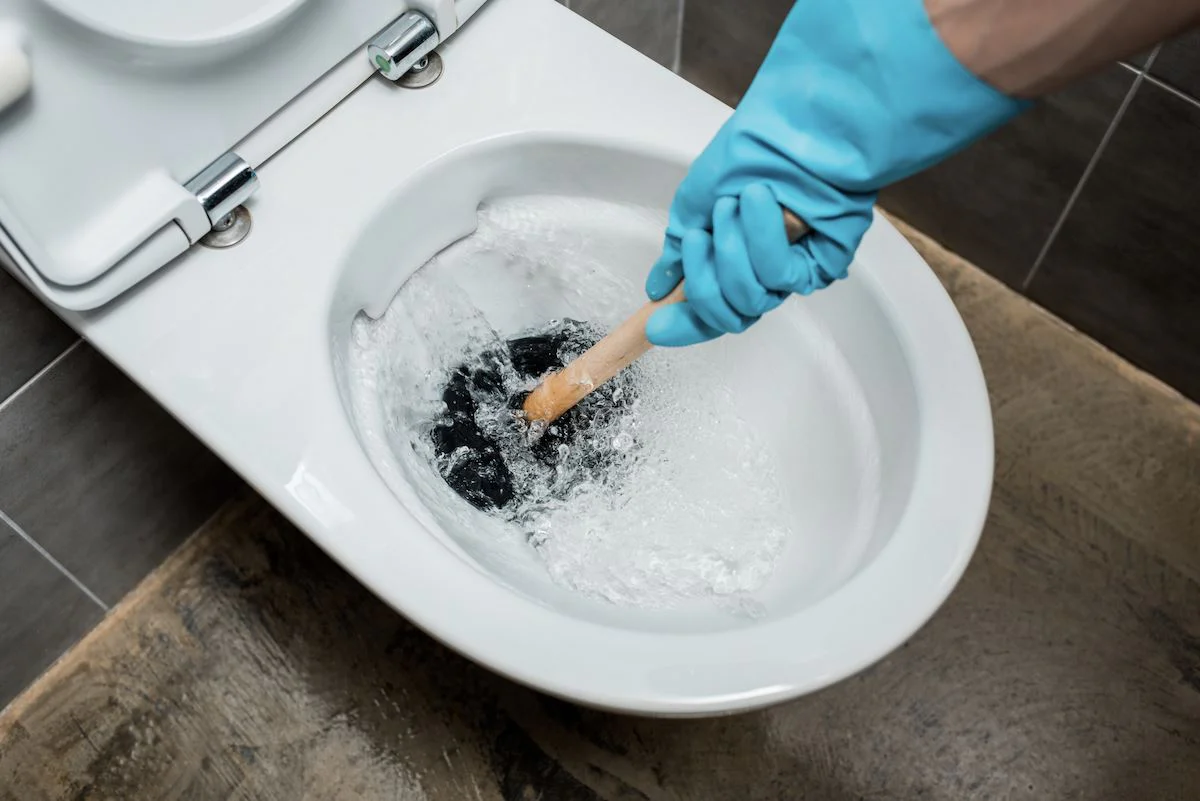Introduction:
Dealing with a clogged toilet is an unpleasant experience, and it becomes even more challenging when the water level is high. While a plunger is a typical go-to tool for such situations, there are alternative methods that can effectively clear the blockage. In this comprehensive guide, we’ll explore step-by-step instructions to unclog a toilet without a plunger, even when the water is at an inconvenient level, ensuring a swift and effective solution to this common household dilemma.
I. Safety Precautions:
Before diving into the unclogging process, prioritize safety. Equip yourself with protective gloves to shield your hands from potential contaminants. Ensure proper ventilation in the bathroom to manage any lingering odors. Importantly, avoid using harsh chemicals, as they can potentially damage your plumbing system.
II. Assessing the Situation:
Understanding the cause of the clog is crucial for determining the most effective resolution. Check the water level in the toilet bowl and inspect for any visible blockages. This initial assessment will guide your approach to resolving the issue.
III. Gather Necessary Tools and Materials:
To tackle the clog without a plunger, gather the following tools and materials:
- Bucket
- Dish soap or liquid detergent
- Hot water
- Plumbing snake or wire hanger
- Rubber gloves
IV. Step-by-Step Procedure:
- Remove Excess Water:
- Use a bucket to carefully remove excess water from the toilet bowl. This step creates a manageable environment for the unclogging process.
- Add Dish Soap:
- Pour a generous amount of dish soap or liquid detergent into the toilet bowl. The soap will act as a lubricant, aiding in the breakdown of the clog.
- Pour Hot Water:
- Slowly pour hot water into the bowl. The heat helps dissolve the materials causing the clog. Pour the water slowly to avoid splashing.
- Wait:
- Allow the soap and hot water to work on the clog for several minutes. This waiting period enhances the effectiveness of the unclogging process.
- Use a Plumbing Snake or Wire Hanger:
- Insert the plumbing snake or straightened wire hanger into the drain. Move it in a circular motion to break up and dislodge the clog.
- Flush the Toilet:
- After using the snake or hanger, flush the toilet to check if the water drains properly. Repeat the process if necessary until the clog is cleared.
V. Alternative Methods:
- Baking Soda and Vinegar:
- Pour 1 cup of baking soda followed by 2 cups of vinegar into the toilet bowl. Allow the mixture to sit for at least 30 minutes before flushing.
- Enzyme-Based Cleaners:
- Follow the instructions on enzyme-based cleaners. Wait for the recommended time before flushing. These cleaners are effective in breaking down organic material causing the clog.
VI. Prevention Tips:
To prevent future clogs:
- Dispose of waste properly, avoiding the flushing of non-flushable items.
- Perform regular maintenance using enzyme-based cleaners, typically once a month.
FAQs:
Q1: Can I use chemical drain cleaners?
A: It’s not recommended, as they may damage your plumbing. Opt for safer alternatives like dish soap, hot water, or enzyme-based cleaners.
Q2: What if the water doesn’t drain after the first attempt?
A: Repeat the process or try an alternative method. If the problem persists, it may be time to call a professional plumber.
Q3: How often should I perform preventive maintenance?
A: Use enzyme-based cleaners regularly, about once a month, to keep your plumbing free from clogs. Regularly practicing proper waste disposal habits will also contribute to preventing future issues.
Conclusion:
Successfully unclogging a toilet without a plunger, especially when the water is high, is achievable with the right approach. By exercising caution, using the appropriate tools and materials, and adopting preventative measures, you can keep your plumbing system functioning smoothly. However, if all else fails, don’t hesitate to seek professional assistance to avoid potential damage to your plumbing.

A group of home improvement enthusiasts and bathroom design experts, combines in-depth knowledge and a shared passion to deliver engaging, informative content that guides readers through the world of bathroom innovation and style.

Leave a Reply